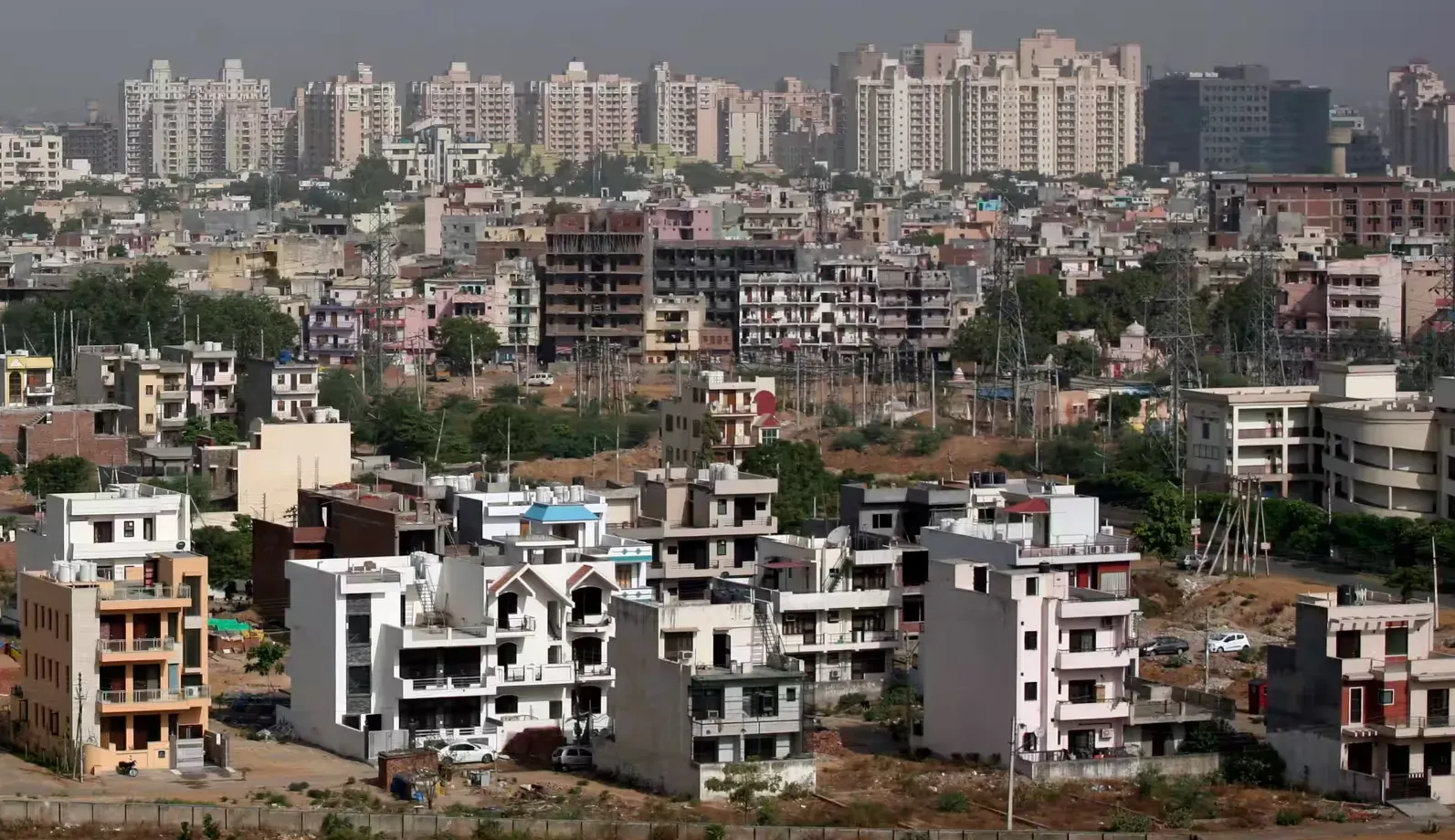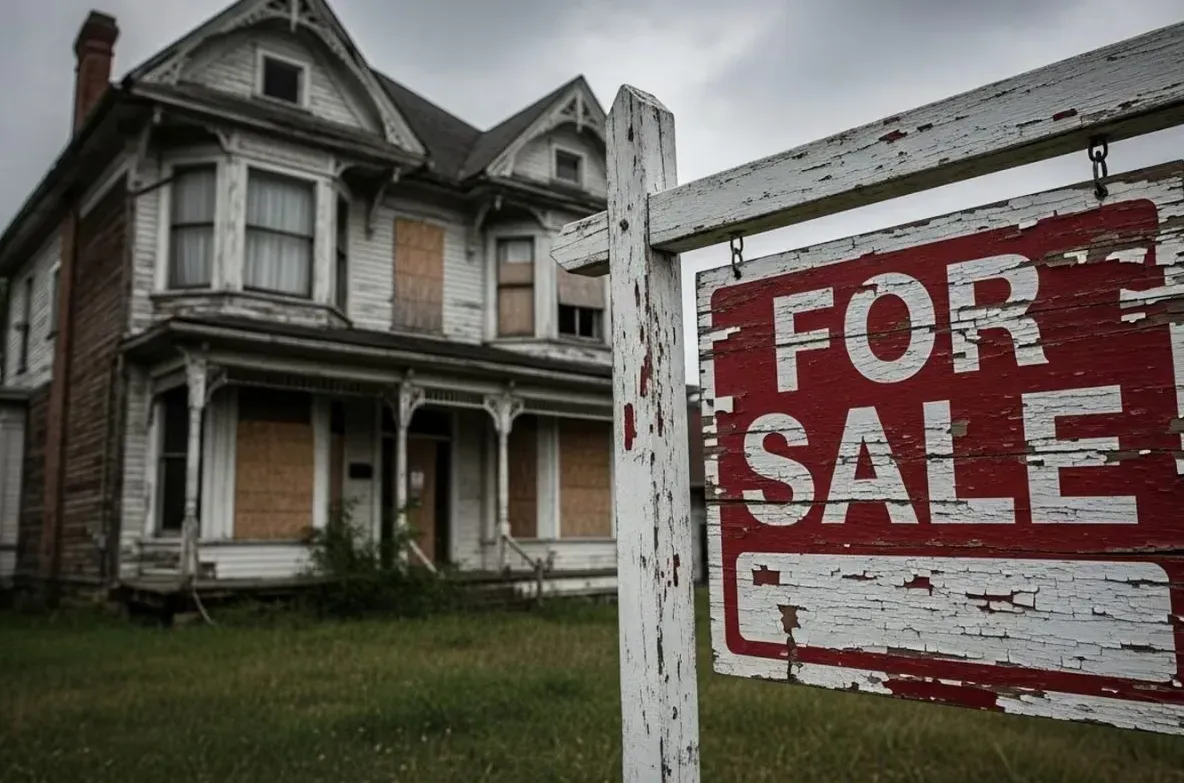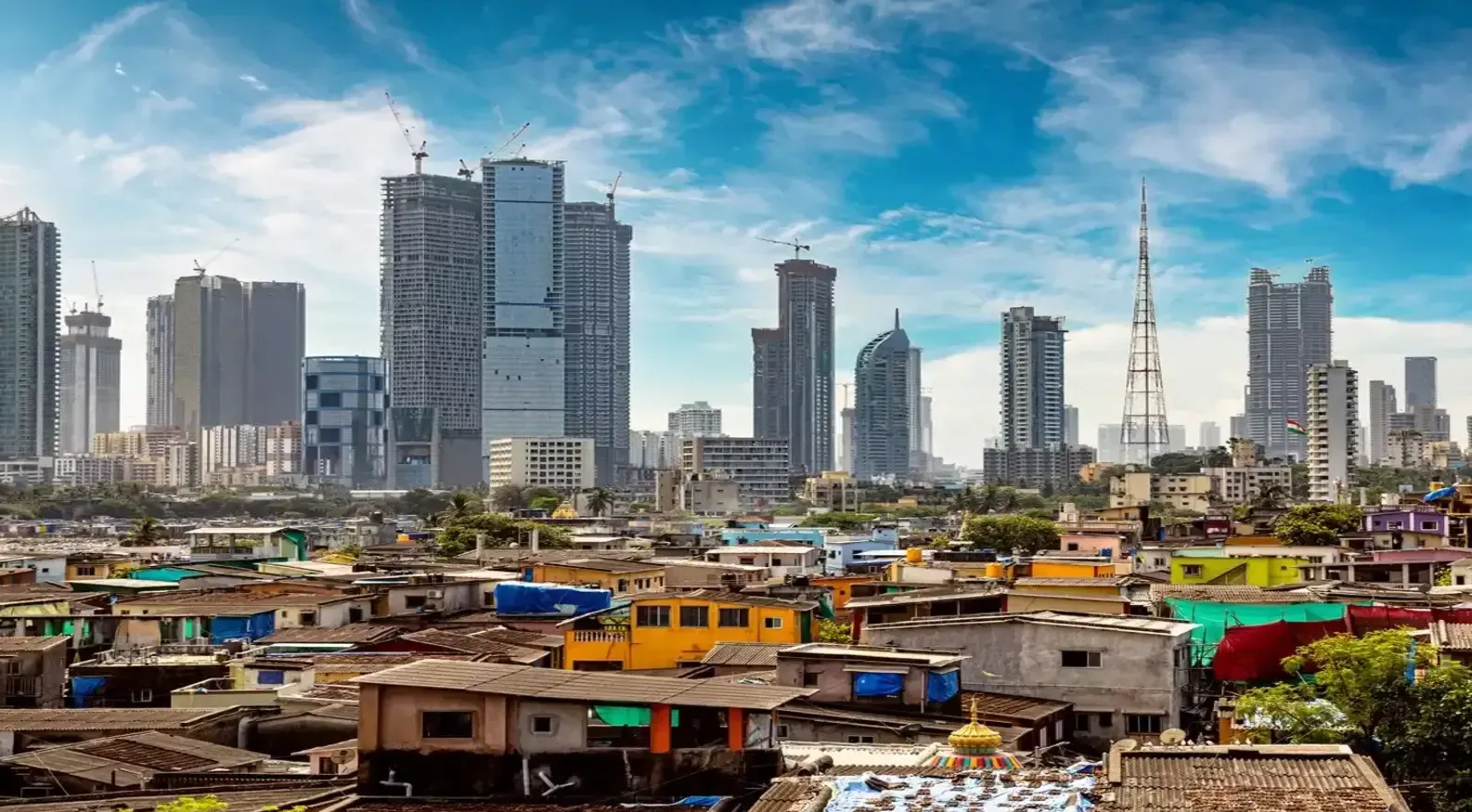Distressed Property Market in India: Opportunities & Risks

By
Shrusti Naik
Posted on October 17, 2025. 10 mins

Distressed Property Market in India: Opportunities & Risks
Introduction

When most investors think of real estate, they picture new projects, premium apartments, gated communities. Yet, a hidden world lies in distressed, stalled or unique properties, assets under financial stress, incomplete developments, foreclosure properties, or heritage buildings with redevelopment potential. For the unconventional investor, these present asymmetric upside possibilities. But with high reward comes high risk.
In India today, with regulatory reforms, evolving distressed-asset frameworks, and changing capital markets, the distressed real estate space is gaining traction. This article explores how savvy investors can spot opportunities in this niche, evaluates key risks, and gives India-centric best practices for entering this realm.
What Qualifies as “Distressed or Unique Properties”?
Before digging deeper, it helps to classify what we mean:
- Distressed / Foreclosure Properties: Assets where owners or developers have defaulted on debt and lenders or courts are pushing recovery/auction.
- Stalled / Abandoned Projects: Construction has stopped due to financial, legal, or regulatory hurdles.
- Redevelopment / Heritage Conversions: Old structures (e.g. heritage buildings, industrial units) that can be repurposed into residential or mixed-use projects.
- Niche / Unique Land Parcels: Irregular land plots, rights-of-way, titled anomalies, or properties with special restrictions but upside if leveraged properly.
A 2024 report notes that “a distressed property signifies a property facing financial hardship, typically due to the owner's inability to meet mortgage obligations.” [8] The challenge is navigating legal, title, regulatory and market complexity, but that is where expertise pays.
Why Consider Distressed or Unique Real Estate?
1. Deep discounts, asymmetric upside
Distressed assets often trade at a steep discount to replacement cost or market value, offering margin of safety. For example, acquisition via auction or debt restructuring could allow entry at 40–70 % of fair value, leaving meaningful upside if turnaround is smooth.
2. Low correlation & diversification benefits
These opportunities may behave differently from typical real estate cycles. Turning around assets often depends on micro-factors (regulatory approvals, cash infusion) rather than macro momentum. This gives diversity within a broader real estate portfolio.
3. Regulatory momentum & institutional interest
India’s Insolvency & Bankruptcy Code (IBC) reforms and judicial precedents have strengthened recovery, making distressed asset investing more tractable. [5] Meanwhile, private credit markets are stepping in to provide bridge financing when traditional lenders balk. In H1 2025, India’s private credit deal flow saw a ~53 % increase to USD 9.0 billion, with real estate as one of the active sectors. [11], [19]
4. Unlocking value through redevelopment
A distressed plot or unfinished building often comes with rights, FAR (floor area ratio) potential, or location advantages. With the right permitting and repositioning, dramatic value uplift is possible, especially in cities with land scarcity.
India Context: Trends & Data
- A 2024 Economic Times piece flagged that India’s real estate faces a major challenge in stalled / unsold projects and lack of distressed-funds flow, which creates both risk and opportunity. [4]
- The India Investment Grid (under DPIIT) now lists stressed assets as investible opportunities, signalling government willingness to publicize and facilitate distressed deals. [7]
- Industry commentary suggests India’s stressed asset market is a growing USD 130 billion opportunity in 2025, drawing attention from special situations funds. [15]
- A major case: The Enforcement Directorate recently restored properties worth ₹175 crore to distressed homebuyers in Rajasthan’s Royal Rajvilas project, under Supreme Court orders. [1], [14] This shows that disputes, delays and recovery are part of the cycle, and government/judicial mechanisms are active.
These signs reflect a shifting terrain, what was once taboo is now becoming investible with institutional rigor.
How to Spot Good Distressed/Unique Deals (Checklist)
| Factor | Why It Matters | Indicators / Red Flags |
|---|---|---|
| Clear Title / Encumbrance Status | Title risk is a major pitfall | Land survey, litigation history, lien records |
| Regulatory / Zoning Levers | Upside arises from unlocking permissions | FAR expansions, heritage status expiry, redevelopment incentives |
| Proximity & Infrastructure | Location still matters | Nearby metro, highways, infrastructure corridors |
| Cash Flow / Exit Options | You need a path to monetization | Potential buyers, lease conversions, phased sale |
| Legal / Regulatory Risk | Distressed assets often carry litigation baggage | Dispute history, pending litigation, compliance status |
| Developer / Sponsor Track Record | Partnering or taking over may require trust | Past project delivery, capital strength |
As a rule: invest only if your due diligence can map risks, you have capital buffer, and you can see a 2–3x upside case through repositioning.
Model Case Study: Stalled Residential Project Turnaround
Imagine a 200-unit apartment project in a Tier-2 city where developer ran out of funds, leaving structure 60 % done. Total project cost was projected at ₹200 cr, but due to distress, the asset is offered for ₹80 cr. A turnaround investor takes over, injects capital, resolves legal/titles, markets completion, and sells or leases units.
- Acquisition cost (including legal and catch-up works): ₹100 cr
- Exit realized value after 3 years: ₹220 cr
- Internal rate of return (IRR): ~30–35 %
This kind of turnaround can beat many core projects, provided delays, disputes and execution are managed well.
Risks & Mitigations
Legal / Title Risk
Many distressed assets carry latent litigation (title disputes, encumbrances). Mitigation: robust legal opinion, title insurance (if available), or recourse structure with sellers.
Execution / Cost Overruns
The budget to complete may exceed estimates. Always plan a cushion (say 20–30 %) and conservative revenue assumptions.
Liquidity / Exit Risk
Selling a distressed or repositioned project may take time. Plan for extended holding and have exit backstops (e.g., leasing, partial sales).
Regulatory / Compliance Risk
Approvals (OC, environmental, heritage, RERA registration) may be delayed. Mitigation: project stage assessment, understanding local regulatory framework, working with local consultants.
Market / Price Risk
Real estate cycles may suffer downturns. Use margin-of-safety (buy at steep discount), diversify exposure, avoid over-leveraging.
Implementation Strategies for Indian Investors
-
Join consortiums / partner with developers Large distressed deals often require capital, execution, and local relationships. Partnering helps share risk and provide domain expertise.
-
Use special-asset or turnaround funds / AIFs Some real estate AIFs in India now target distressed or self-liquidating assets. E.g., Meenakshi Alternates launched a ₹700 cr real estate AIF in 2025. [26]
-
Monitor court / bank foreclosure auctions Lenders and Asset Reconstruction Companies (ARCs) auction distressed property auctions; these can be source deals if you have quick funding and due diligence ready.
-
Tap government / investment platforms Use portals like India Investment Grid (IIG) that publish stressed asset opportunities for investors. [7]
-
Perform forensic due diligence Beyond standard checks, also consider soil condition, structural audits, utility connectivity, hidden liabilities (e.g., pending property tax, municipal dues).
-
Structure exit paths Always have alternative monetization routes, e.g. leasing, partial sale, joint venture with developers, vertical split configuration.
When Not to Invest in Distressed Properties
- When legal or title risk is opaque and non-insurable
- When you lack capital buffer or time to hold long
- In markets with weak fundamentals or persistent oversupply
- When exit demand is uncertain (e.g. very remote or non-livable zones)
Conclusion

For the unconventional investor, distressed and unique real estate properties in India represent a frontier of asymmetric opportunity. But this is not for the faint-hearted: success demands deep due diligence, legal savvy, capital buffer, strong exit planning, and sometimes patience spanning multiple years.
When done right, these deals can yield returns far beyond standard projects, turning neglected assets into profitable stories. As India’s regulatory, financial and realty ecosystems evolve, the distressed property market is shifting from niche to institutional interest.
Frequently Asked Questions
-
Is buying a distressed property in India legally safe for retail investors? It can be, but only if you meticulously verify title, litigation, and sanction status. Engaging legal experts is essential.
-
Does GST or tax treatment differ for distressed property acquisitions? GST may apply on sale of under-construction property; buying completed/ready properties might be exempt. Always check GST and stamp duty in the specific state.
-
How does RERA / state real estate regulation affect distressed projects? Even distressed projects must comply with RERA registration, disclosures, and grievance redressal, increasing transparency.
-
What is “OC” & “PLC” in real estate, do they matter in distressed cases?
- OC (Occupancy Certificate): Approval that construction is complete and safe. Without OC, you may not get legal electricity or water.
- PLC (Preferential Location Charges): Extra cost for premium location within a project (e.g. corner, park-facing). In distressed deals, PLCs may or may not be already factored, check if liability is included.
-
Can we use home loan / bank financing to acquire distressed properties? It’s harder, since many banks are cautious about lending on distressed or under-construction or litigated assets. Private credit or mezzanine financing is more common in this space.
References
- “ED restores Rs 175-cr worth assets to distressed homebuyers,” The Economic Times, Oct 2025.
- “Property Distress vs Foreclosure: Insights into the Indian Real Estate Market,” RealtyNXT, Apr 2024.
- “Stressed Assets - A Business Opportunity in India,” BDO Insights.
- “Stalled projects, lack of distress funds key cracks in realty,” Economic Times, Oct 2024.
- “Distressed Assets in India 2025 | Opportunities & Risks,” Rakesh Narula blog.
- “India Real Estate Report FY 2025-26: Trends, Insights & Forecasts,” Grant Thornton India, Jun 2025.
- “Stressed Assets in India: Explore Stressed Asset Opportunities in India | IIG,” India Investment Grid.
- “Property Distress & Foreclosure: Perspectives From Indian Market,” RealtyNXT, Apr 2024.
- “How India’s private credit is stepping in distressed realty,” S&P Global / India Forward, 2025.
- “Private credit in India: H1 2025 update,” EY, 2025.